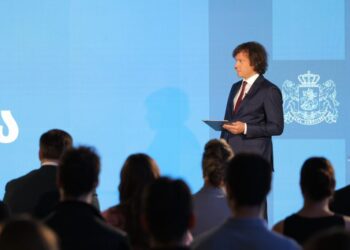Read Part 1.
I look around. The village of Adishi is crowned by Mt Tetnuldi, but is more destroyed than whole as far as its buildings go. Half-ruined towers and wooden or stone skeletons of houses are everywhere; the towers especially a shame. One of the most prominent ones, near the top of the village with a stream running past it, has half of its intricate top detail gone and cracks running down its entire length; and no roof, like most of them here. It could come down with the next hard frost, water getting in, turning to ice and shattering it. So my main first impression of Adishi is of sorrow. There are a number of guest houses running, which is a good sign, but the sheer effort of bringing materials up here and renovating is daunting. We returned to Nino and Tarzan’s guest house for a great supper and bed.

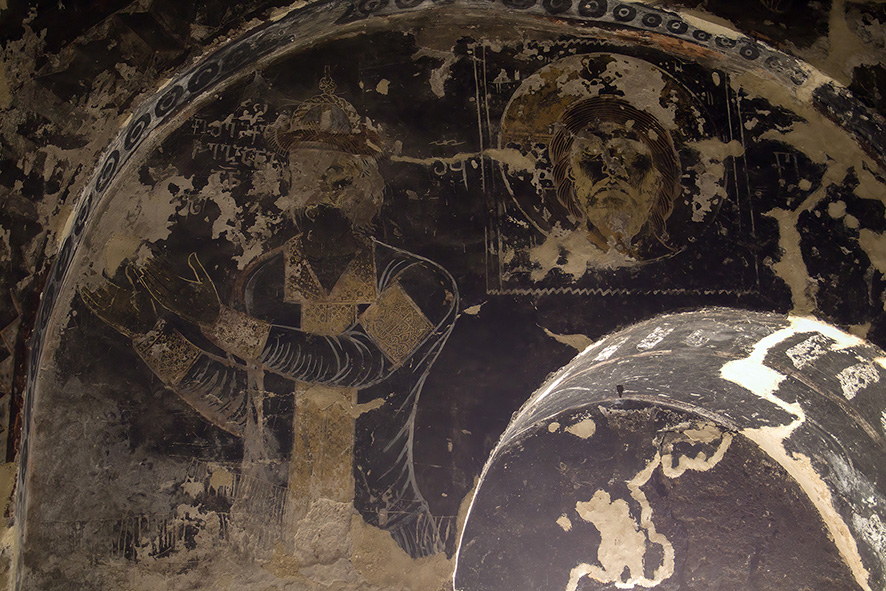
The early morning brought sounds of rain over the dull roar of the Adishchala river, along with the ongoing presence of my aforementioned upper leg pains from the over-fast exertions of the day before. If this continues, I thought, I’ll change my plans, not trek with the group, and just stay here a day or two more to get to know the village better. After all, starting a 17 km up-and-down slog with pain at the start is not wise; and if I don’t even have good views, just rain coming down on me, what’s even the point!
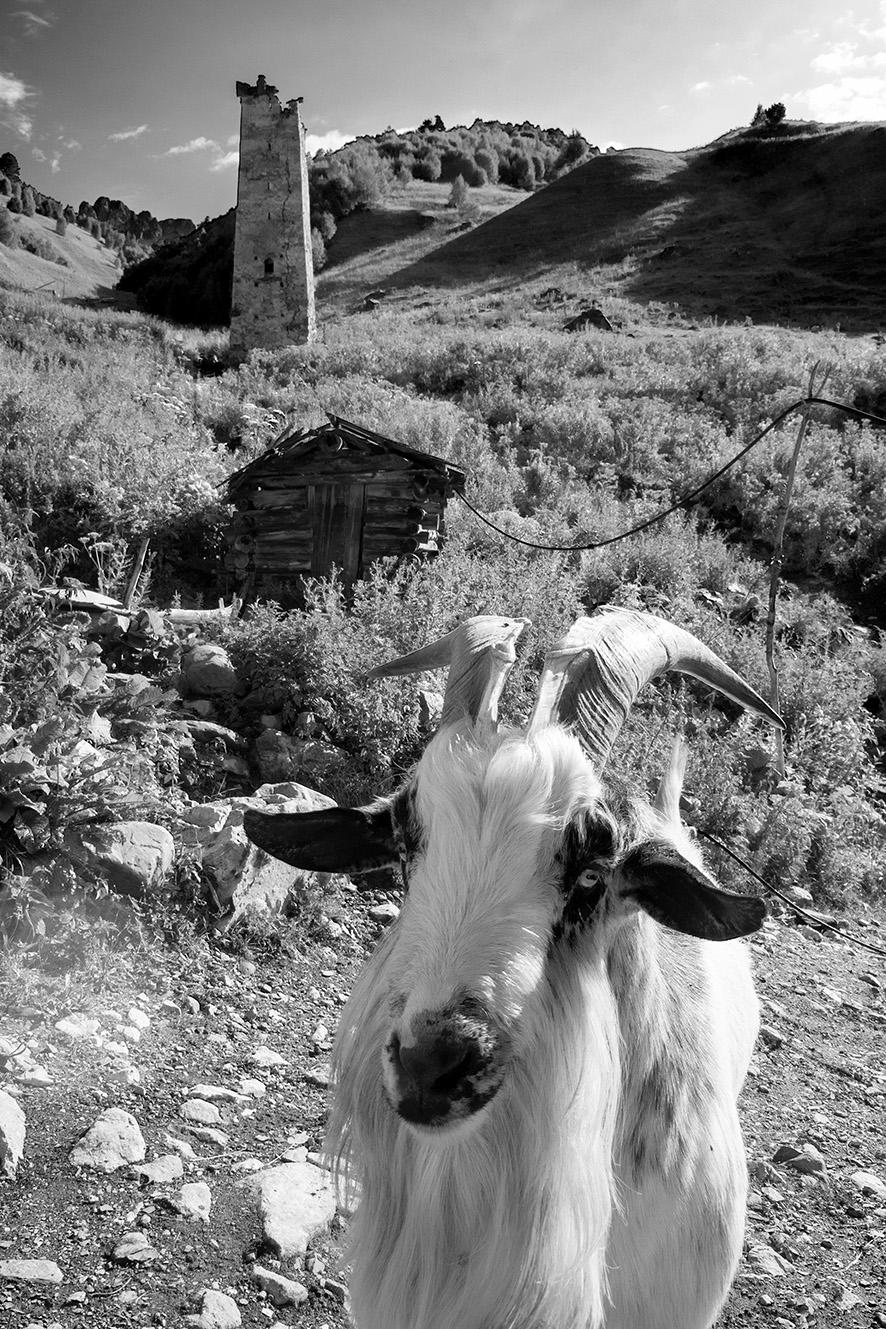
But after a good breakfast with the group, both my leg pains and the rain had actually stopped. I had asked Nino to arrange the little church just above her house opened for those of us who wanted to see inside it, and a few others joined me there.
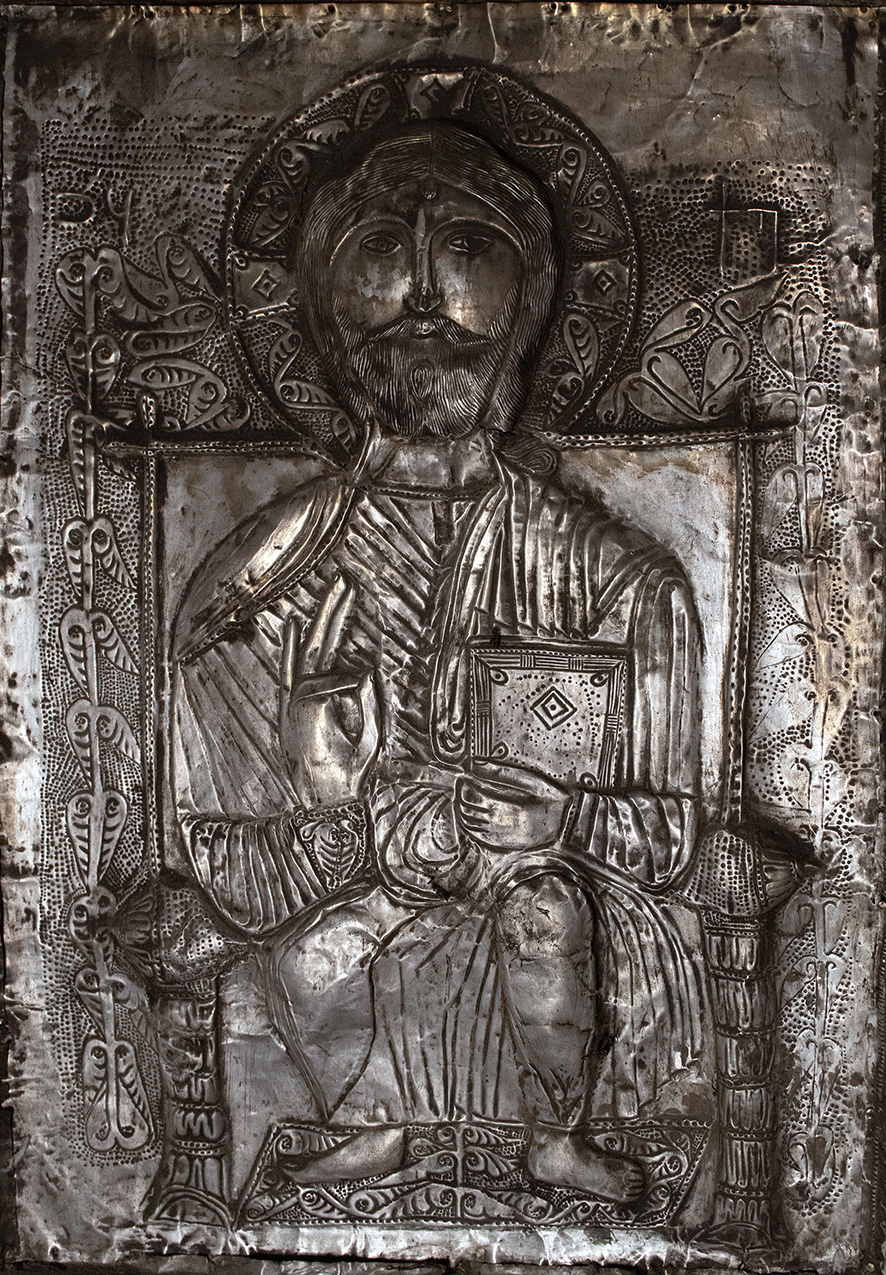
The church interior matches the rest of Adishi for sad condition. Its dark frescoes, once no doubt magnificent, are half gone, scratched out, some fallen plaster, some moisture damage. But there are many ancient icons too, all labelled, and I was allowed to photograph anything I wanted. No flash, of course! A single burst of camera or video lighting can measurably fade paint. So I upped my camera’s light sensitivity and shot away happily, dazzled by the magnificence of the painted and tooled gilt-on-silver masterpieces of folk ecclesiastical art. Everyone noticed how much work would be needed to restore or even just preserve this church. It must be done with great care by experts to not make things worse.
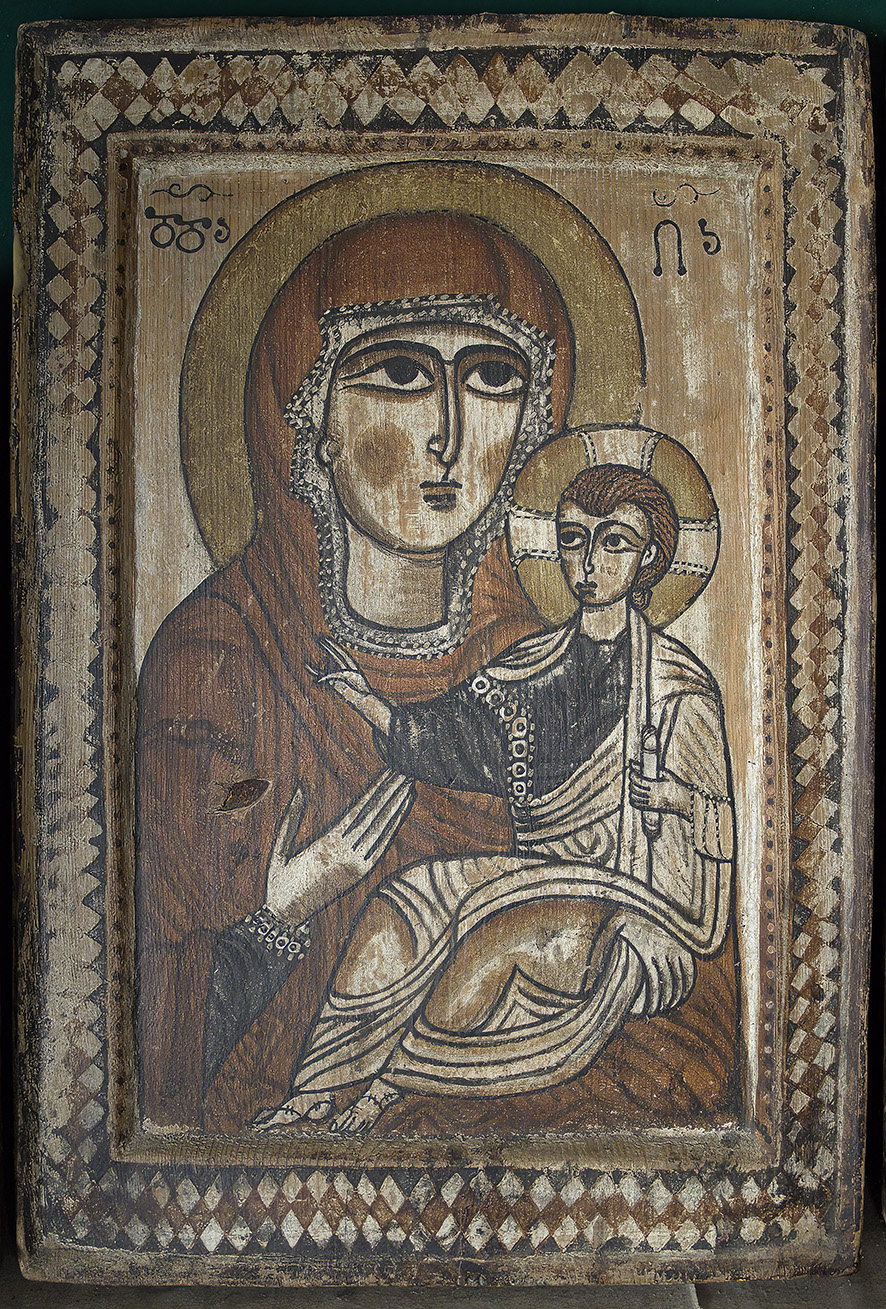
I asked Nino about a school. The nearest one’s in Ipari, she said, 9 km away, and a minivan takes the 4 or 5 school-age children down and back every day. At least they have a ride… but doing this in mid-winter would be no fun.
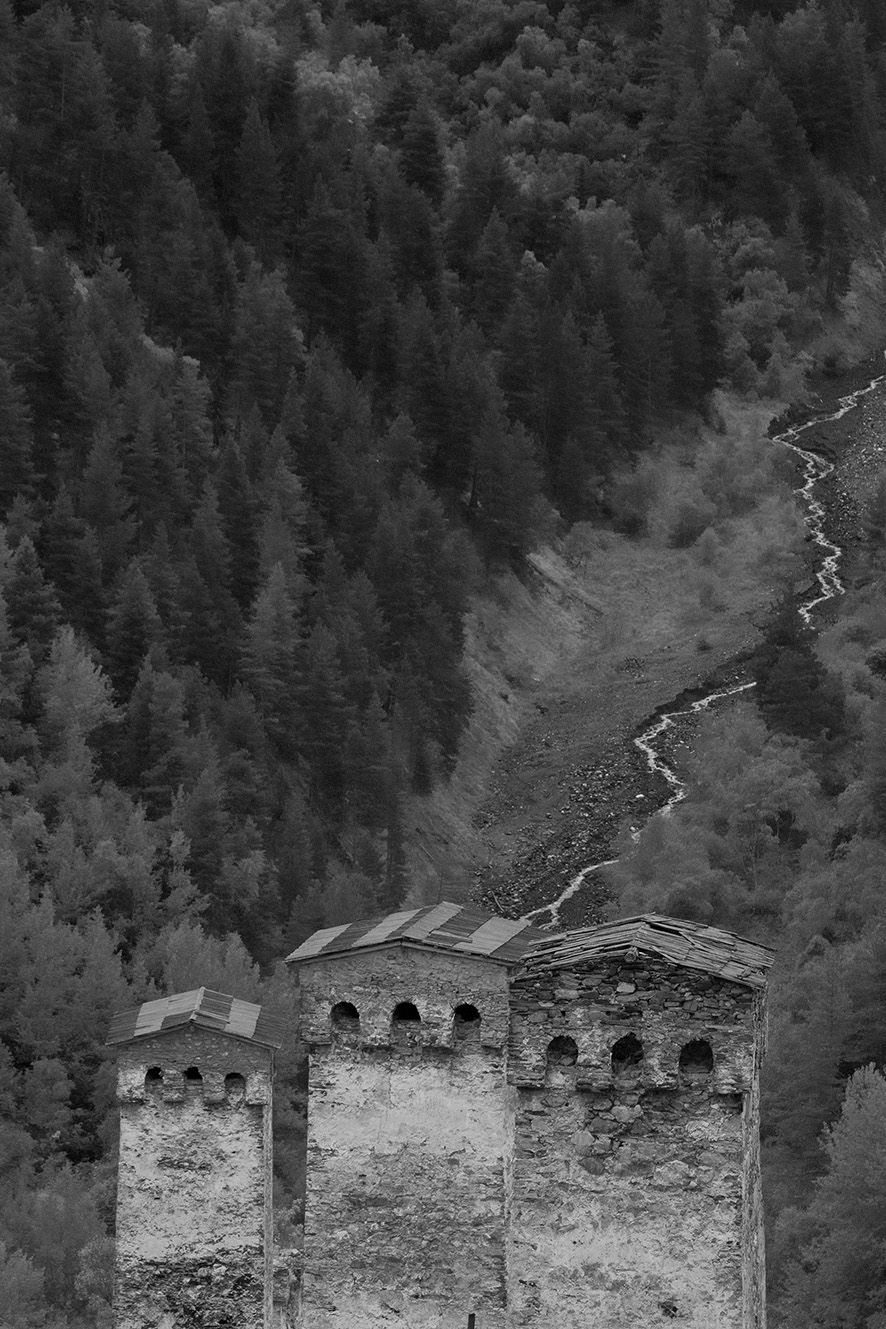
I made my decision to continue for the morning and see how my legs (and the weather) would do. We said our goodbyes and set off, 18 of us, led by Klement in front and Irakli behind, towards the Adishchala Valley, and horses waiting to take us across the river, which otherwise we could not manage for its depth and speed. That crossing might be a good place to decide, onwards or back, based on my needs. Adishi receded behind us, step by step.
To be continued…
Blog by Tony Hanmer
Tony Hanmer has lived in Georgia since 1999, in Svaneti since 2007, and been a weekly writer and photographer for GT since early 2011. He runs the “Svaneti Renaissance” Facebook group, now with over 2000 members, at www.facebook.com/groups/SvanetiRenaissance/
He and his wife also run their own guest house in Etseri: www.facebook.com/hanmer.house.svaneti




